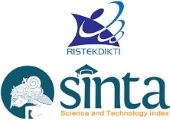Warung Bakmi Mbah Gito: Eksplorasi Pengalaman terkait Produk dan Ruang di Wisata Kuliner Berbasis Budaya Jawa
Abstract
ABSTRACT
The existence of Warung Bakmi Mbah Gito as a culinary tourism shows the importance of studying culinary products and space attributes that promote local culture. This study tries to explore the experience of Javanese culture-based culinary products and spaces at Warung Bakmi Mbah Gito. data collection methods through observation, in-depth interviews, and questionnaires. The results of descriptive statistics were triangulated with qualitative data in order to produce conclusions. The results of this study indicate that the experience of culinary products at Warung Bakmi Mbah Gito is focused on tangible and intangible products. The products are related to local food using original and natural ingredients that come from the village. Meanwhile, the intangible product is related to the space atmosphere and service model. In addition, the main variables in the space experience at Warung Bakmi Mbah Gito are focused on the design of the room and the music. This study is expected to provide another understanding in the development of culinary tourism destinations based on local culture. Especially in other areas that have food with a different local cultural base.
ABSTRAK
Eksistensi Warung Bakmi Mbah Gito sebagai sebuah wisata kuliner menunjukkan pentingnya kajian terhadap produk kuliner dan atribut ruang yang mengangkat budaya lokal. Penelitian ini berusaha mengeksplorasi pengalaman produk dan ruang kuliner berbasis budaya jawa di Warung Bakmi Mbah Gito. metode pengumpulan data melalui observasi, wawancara mendalam, dan kuesioner. Hasil statistik deskriptif ditriangulasi dengan data kualitatif agar menghasilkan kesimpulan. Hasil dari penelitian ini menunjukkan pengalaman produk kuliner di Warung Bakmi Mbah Gito tertuju pada produk tangible dan intangible. Produk tangible terkait dengan makanan lokal yang menggunakan bahan asli dan alami yang berasal dari desa. Sedangkan, produk intangible terkait dengan atmosfer ruang dan model pelayanan. Selain itu, variabel utama dalam pengalaman ruang di Warung Bakmi Mbah Gito tertuju pada desain ruang dan musik yang dimainkan. Penelitian ini diharapkan akan memberikan pemahaman lain dalam sebuah pengembangan destinasi wisata kuliner berbasis budaya lokal. Terutama di daerah lain yang memiliki makanan dengan basis budaya lokal yang berbeda.
Keywords
Full Text:
PDFReferences
Björk, P., & Kauppinen-Räisänen, H. (2016). Local food: a source for destination attraction. International Journal of Contemporary Hospitality Management, 28(1), 177–194. https://doi.org/10.1108/IJCHM-05-2014-0214
Budiani. (2021). Kopi Klotok, Gudeg Pawon, dan Bakmi Mbah Gito Produk dan Ruang Kuliner Berbasis Budaya Lokal Sebagai Daya Tarik Wisata Kuliner di Yogyakarta. Universitas Gadjah Mada.
CNN Indonesia. (2021). 100 Restoran di Yogyakarta Tutup Akibat Corona. https://www.cnnindonesia.com/ekonomi/20210202191806-92-601492/100-restoran-di-yogyakarta-tutup-akibat-corona
Dinas Pariwisata Kota Yogyakarta. (2019). 10 top destinasi dan 10 top kuliner JOGJA di pesona mudik 2019. https://pariwisata.jogjakota.go.id/detail/index/422
Dipokusumo, G. (2011). Sabdapalon Nayagenggong Nagih Janji: Makna Dan Pemahaman Dari Masa Ke Masa. Jumantara, 2(1), 1–9.
Dittmer, P. R. (2002). Principles of Food, Beverage and Labor Cost Controls (7th ed.). New York: John Wiley & Sons Inc.
du Rand, G. E., Heath, E., & Alberts, N. (2003). The role of local and regional food in destination marketing. Journal of Travel and Tourism Marketing, 14(3–4), 97–112. https://doi.org/10.1300/J073v14n03_06
Goyette, I., Ricard, L., & Bergeron, J. (2010). e-WOM Scale : Word-of-Mouth Measurement Scale for e-Services Context *. 23, 5–23. https://doi.org/10.1002/CJAS.129
Guerrero, L., Guàrdia, M. D., Xicola, J., Verbeke, W., Vanhonacker, F., Zakowska-Biemans, S., Sajdakowska, M., Sulmont-Rossé, C., Issanchou, S., Contel, M., Scalvedi, M. L., Granli, B. S., & Hersleth, M. (2009). Consumer-driven definition of traditional food products and innovation in traditional foods. A qualitative cross-cultural study. Appetite, 52(2), 345–354. https://doi.org/10.1016/j.appet.2008.11.008
Hastuti, K., & Syarifzh, A. M. (2016). Identifikasi Fitur Melodi Dalam Musik Gamelan Berdasarkan Hubungan Asosiasi Antar-Notasi. Seminar Nasional Sistem Informasi Indonesia, 47–54.
Hugo S. Prabangkara. (2018). Kuliner Yogyakarta, Dari Identitas Ke Komoditas. Lensa Budaya, 13(2), 110–122.
Hussain, R., & Ali, M. (2015). Effect of Store Atmosphere on Consumer Purchase Intention. International Journal of Marketing Studies, 7(2). https://doi.org/10.5539/ijms.v7n2p35
Jenkins, T. S. (2011). The Culture of the Kitchen . About Campus: Enriching the Student Learning Experience, 16(2), 11–19. https://doi.org/10.1002/abc.20056
Kartono, J. L. (2005). Konsep Ruang Tradisional Jawa dalam Konteks Budaya. Dimensi Interior, 3(2), 124–136.
Mirosa, M., & Lawson, R. (2012). Revealing the lifestyles of local food consumers. British Food Journal, 114(6), 816–825. https://doi.org/10.1108/00070701211234345
Pamujiningtyas, K. (2019). Menyantap Bakmi Godog Legendaris di Bakmi Jowo Mbah Gito. https://kumparan.com/kumparanfood/menyantap-bakmi-godog-legendaris-di-bakmi-jowo-mbah-gito-1552279546854954975/full
Pestek, A., & Nikolic, A. (2011). Role of Traditional Food in Tourist Destination Image Building: Example of the City of Mostar. UTMS Journal of Economics, 2(1), 89–100.
Pitana, I. G. (2006). Pengantar ilmu Pariwisata. Yogyakarta: Penerbit Andi.
Rahayu, A. D. (2018). Jejak Rasa dari Yogyakarta (Suladi (ed.)). Jakarta Timur: Badan Pengembangan dan Pembinaan Bahasa Jalan Daksinapati Barat IV.
Reily, M. (2019). Pemerintah Target Wisata Gastronomi Indonesia Masuk Tiga Besar Dunia. https://katadata.co.id/berita/2019/04/25/pemerintah-target-wisata-gastronomi-indonesia-masuk-tiga-besar-dunia
Safira, M. (2017). Bakmi Jowo Mbah Gito: Sedep Tenan! Bakmi Godog Berkuah Gurih dan Magelangan. https://food.detik.com/rumah-makan/d-3573666/bakmi-jowo-mbah-gito-sedep-tenan-bakmi-godog-berkuah-gurih-dan-magelangan
Sims, R. (2009). Food, place and authenticity: Local food and the sustainable tourism experience. Journal of Sustainable Tourism, 17(3), 321–336. https://doi.org/10.1080/09669580802359293
Smith, S., & Costello, C. (2009). Segmenting visitors to a culinary event: Motivations, travel behavior, and expenditures. Journal of Hospitality and Leisure Marketing, 18(1), 44–67. https://doi.org/10.1080/19368620801989022
Soecahyadi. (2012). Analisa Statistik dengan SPSS (1st ed., Issue April). Jakarta Selatan: Universitas Sahid Jakarta.
Sudaryono. (2019). Metodologi Penelitian: Kuantitatif, Kualitatif, dan Mix Method (Ed. 2). Raja Grafindo Persada.
Suranny, L. E. (2015). Traditional of Kitchen Equipment as Cultural Heritage Richness of Indonesia Nation. Jurnal Arkeologi Papua, 7(1), 47–62.
Suriani, N. M., & Ariani, R. P. (2020). Balinese Fusion Food as Local Culinary Tourism Products. 406(Iconhomecs 2019), 228–233. https://doi.org/10.2991/assehr.k.200218.036
Teegavarapu, S., Summers, J. D., & Mocko, G. M. (2008). Case study method for design research: A justification. Proceedings of the ASME Design Engineering Technical Conference, 4(January), 495–503. https://doi.org/10.1115/DETC2008-49980
Tsai, C. T. S., & Wang, Y. C. (2017). Experiential value in branding food tourism. Journal of Destination Marketing and Management, 6(1), 56–65. https://doi.org/10.1016/j.jdmm.2016.02.003
Widiastini, N. M. A., Arini, R. P., & Andiani, N. D. (2014). Pengemasan makanan lokal sebagai produk wisata kuliner di Bali. Jurnal Ilmiah Pariwisata, 19(2), 121–133.
Zumthor, P. (2006). Atmospheres : Architecture Environment Surrounding Object. Birkhauser: Publisher for Architecture.
DOI: https://doi.org/10.17509/jithor.v5i1.38352
Refbacks
- There are currently no refbacks.

This work is licensed under a Creative Commons Attribution-ShareAlike 4.0 International License.
eISSN : 2654-4687
pISSN : 2654-3893
This work is licensed under Creative Commons Attribution-ShareAlike 4.0 International License














